Kaysie
Site Contributor
- Joined
- Mar 10, 2003
- Messages
- 14,464
- Reaction score
- 112
- Points
- 0
- Location
- North Dakota
- Country
- United States
- Display Name
- Kaysie
Today I made the long trip down to Virginia to see GreatWteHunter, Justin. He took me out some of his favorite herping spots, and to some spots he'd never been, like this stream.

The first spot we stopped at was a boggy area. Previously here, Justin had found both spotted and marbled salamanders. While we found no adults, we did find some Ambystoma opacum eggs. They were fertile, and you could see the little larvae inside. As you may or may not know, marbled sals are fall breeders, and lay their eggs in depressions which fill up with water in the spring, and the eggs hatch, getting a head start on some other species. Unfortunately, momma sal was no where to be found. We looked for her, and then looked for her again on our way back out.
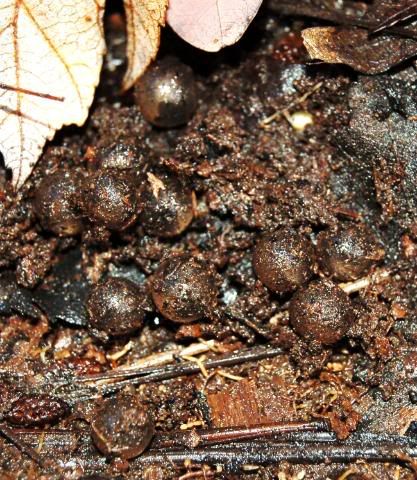
The next spot we surveyed was stream-side. We were looking specifically for P. ruber. We found a few larvae, plus some Desmognathus larvae.
Then this guy showed up (P. ruber nitidus).
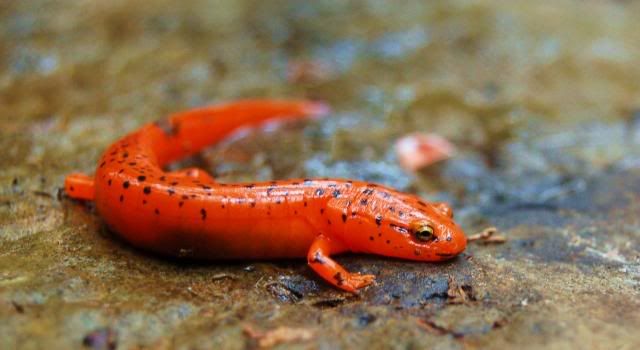
Justin says he's seen very few adult P. ruber, even though finding a fair number of larvae.
We also found quite a few dusky sals, of various species.
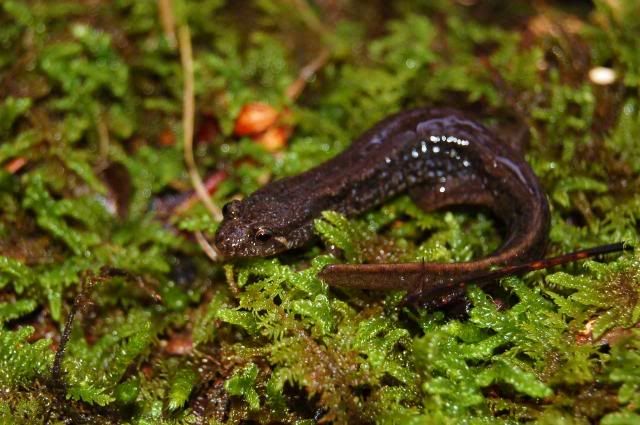
Neither of us are good at IDing duskies, so if anyone knows who this guy is, I'd be glad to hear! (update: Desmognathus monticola)
One dusky we CAN ID, however, is the blackbellied salamander, D. quadramaculatus.
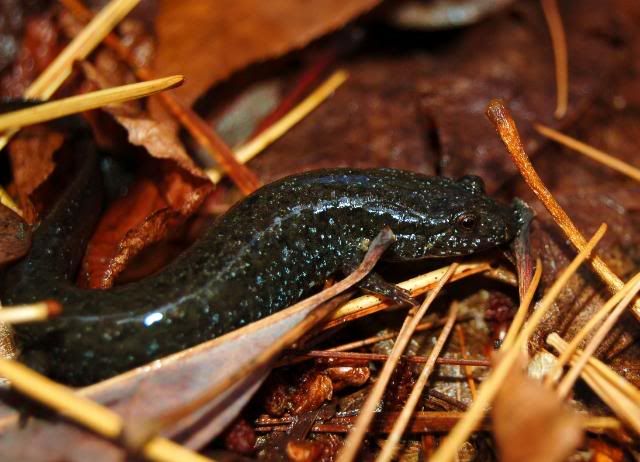
Another species we found was the Blue Ridge spring sal, Gyrinophilus porphyriticus danielsi, a striking specimen. And very docile.
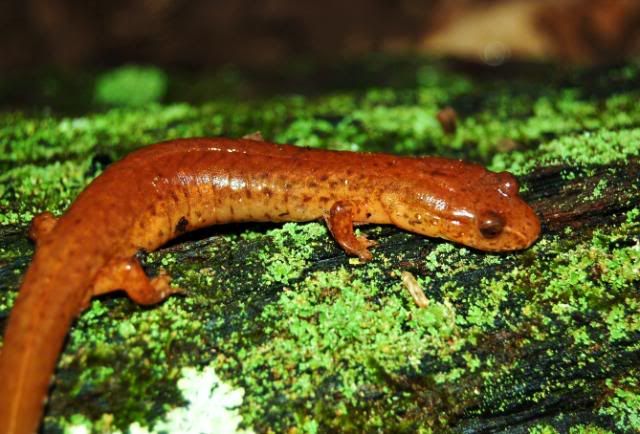
Then there's the 'slimy complex'. While the first is an ENORMOUS slimy salamander, P. glutinosis, the second and third pics could be something else. The little one (last picture) seems like a Wehrle's salamander to me, but I don't know. The face and the tail just don't seem like a slimy salamander.

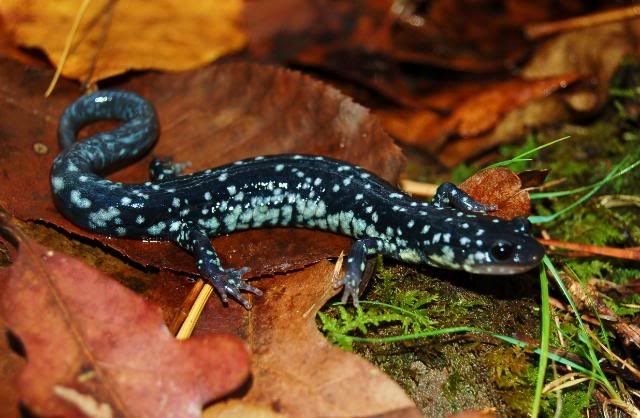
(P. cylindraecus. Oh how I wish this picture was in better focus!!)
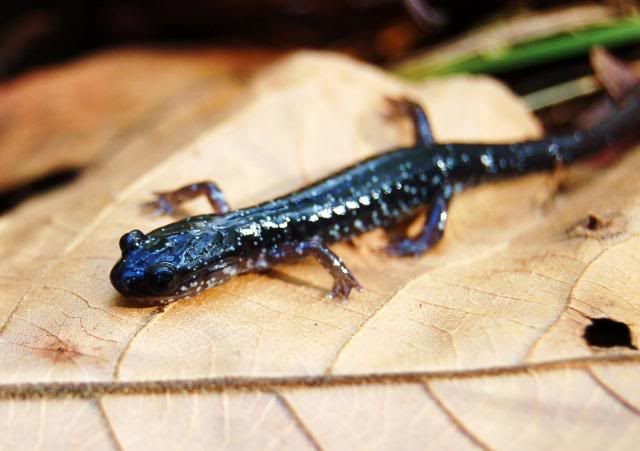
(Update: definitely Plethodon wehrlei)
Of course, there are always two-lined sals, E. bislineata.
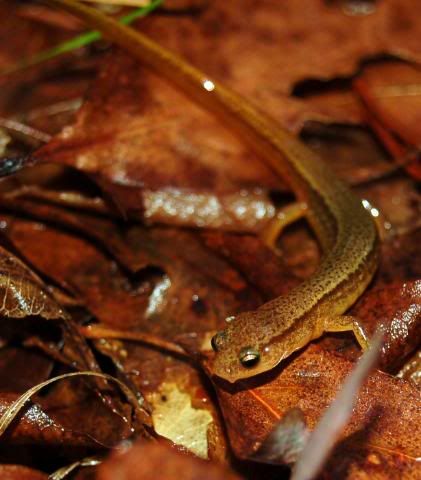
But this one was different. Note how pink the head and legs appear. It's also full of eggs.

We found a few specimens with this same coloration in the general area. It doesn't appear very striking in the pictures, but it was definitely noticeable in person, and definitely not 'normal' coloration. Possibly E. cirrigera?
All told, we found over a dozen species, including at least four species of duskies, red efts (Notopthalmus v. viridescens), and the slimy complex species. Notably absent were any Ambystoma spp., save the eggs, and redbacks. We were fairly shocked we found no redbacks. It makes me feel kind of... defeated. Like I have failed, for not finding any redbacks. lol.
Hope you enjoy!

The first spot we stopped at was a boggy area. Previously here, Justin had found both spotted and marbled salamanders. While we found no adults, we did find some Ambystoma opacum eggs. They were fertile, and you could see the little larvae inside. As you may or may not know, marbled sals are fall breeders, and lay their eggs in depressions which fill up with water in the spring, and the eggs hatch, getting a head start on some other species. Unfortunately, momma sal was no where to be found. We looked for her, and then looked for her again on our way back out.

The next spot we surveyed was stream-side. We were looking specifically for P. ruber. We found a few larvae, plus some Desmognathus larvae.
Then this guy showed up (P. ruber nitidus).

Justin says he's seen very few adult P. ruber, even though finding a fair number of larvae.
We also found quite a few dusky sals, of various species.

Neither of us are good at IDing duskies, so if anyone knows who this guy is, I'd be glad to hear! (update: Desmognathus monticola)
One dusky we CAN ID, however, is the blackbellied salamander, D. quadramaculatus.

Another species we found was the Blue Ridge spring sal, Gyrinophilus porphyriticus danielsi, a striking specimen. And very docile.

Then there's the 'slimy complex'. While the first is an ENORMOUS slimy salamander, P. glutinosis, the second and third pics could be something else. The little one (last picture) seems like a Wehrle's salamander to me, but I don't know. The face and the tail just don't seem like a slimy salamander.


(P. cylindraecus. Oh how I wish this picture was in better focus!!)

(Update: definitely Plethodon wehrlei)
Of course, there are always two-lined sals, E. bislineata.

But this one was different. Note how pink the head and legs appear. It's also full of eggs.

We found a few specimens with this same coloration in the general area. It doesn't appear very striking in the pictures, but it was definitely noticeable in person, and definitely not 'normal' coloration. Possibly E. cirrigera?
All told, we found over a dozen species, including at least four species of duskies, red efts (Notopthalmus v. viridescens), and the slimy complex species. Notably absent were any Ambystoma spp., save the eggs, and redbacks. We were fairly shocked we found no redbacks. It makes me feel kind of... defeated. Like I have failed, for not finding any redbacks. lol.
Hope you enjoy!
Last edited:
